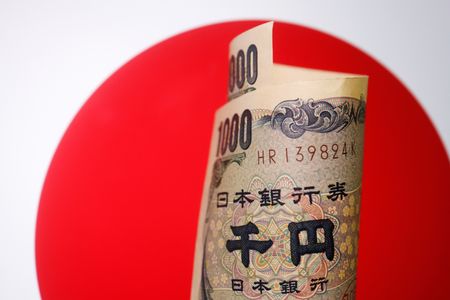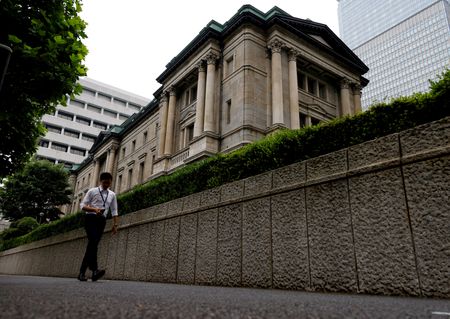By Tetsushi Kajimoto
TOKYO (Reuters) -Japan raised its estimates for long-term interest rates over the coming few years in government’s twice-yearly fiscal projections issued on Tuesday, following the central bank’s decision last month to allow 10-year bond yields to move more widely.
Higher rates will test the government’s ability to service the industrial world’s heaviest debt burden at more than double the size of Japan’s annual economic output.
While a decade of aggressive monetary stimulus under Bank of Japan Governor Haruhiko Kuroda did little to economic growth, which averaged around 1% over that time, it has kept the government’s borrowing costs at rock-bottom.
Now the government sees Japan’s primary budget surplus in fiscal 2026, although that surplus would “come into sight” in the next fiscal year if it strives to streamline government budget spending.
“It’s not easy to realise it at a time when uncertainty heightens,” Prime Minister Fumio Kishida told a meeting of his 11-member top economic advisory panel – Council on Economic and Fiscal Policy – which includes Kuroda.
“We will strive to achieve both economic revival and fiscal reform so as not to lose markets’ and global community’s confidence in our medium- to long-term fiscal sustainability.”
ECONOMIC GROWTH, FISCAL REFORM
Under its latest projections, Kishida’s government looks to achieve a primary budget surplus – excluding new bond sales and debt-servicing costs – in the fiscal year to March 2026.
The government, which has missed budget-balancing targets for a decade, would miss it again due to increased defence budget, leaving a shortfall of 1.5 trillion yen ($11.56 billion) in fiscal 2025, up from 500 billion yen seen previously.
The debt-to-GDP ratio will peak at 217% in fiscal 2022, before steadily declining over the forecast period through fiscal 2032, based on rosy assumptions that the economy will grow by 2% per year.
Assuming the baseline scenario of zero growth, the debt-to-GDP ratio is expected to turn upward in the latter half of the forecast period.
Long-term rates are expected to rise from 0.3% seen this fiscal year to 0.4% in 2023-2025 before climbing eventually to 3.1% in fiscal 2032, the projections showed. The projections show that a 0.5 percentage-point rise in long-term rates would add 3.3 percentage points to the debt-to-GDP ratio.
In comparison, the previous estimates issued in July showed long-term rates steady at 0.1% in fiscal 2022-2025.
“We see underlying interest rates to be somewhat higher, which will cause outstanding government debt to deviate upward due to the BOJ’s move last month,” a Cabinet Office official said.
($1 = 129.8000 yen)
(Reporting by Tetsushi Kajimoto; Editing by Jacqueline Wong and Tomasz Janowski)


